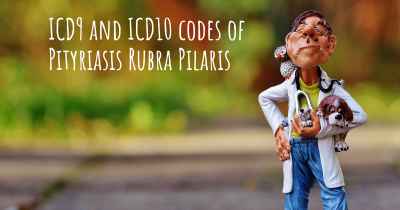What is the life expectancy of someone with Pityriasis Rubra Pilaris?
Life expectancy of people with Pityriasis Rubra Pilaris and recent progresses and researches in Pityriasis Rubra Pilaris

Pityriasis Rubra Pilaris (PRP) is a rare chronic skin disorder characterized by reddish-orange scaly patches, thickened skin, and abnormal growth of nails. The life expectancy of individuals with PRP varies depending on the subtype and severity of the condition. While there is no cure for PRP, treatment options such as topical creams, oral medications, and phototherapy can help manage symptoms and improve quality of life. It is crucial for patients to work closely with healthcare professionals to develop a personalized treatment plan. Early diagnosis, proper medical care, and adherence to treatment can significantly impact the prognosis and life expectancy of individuals with PRP.
Pityriasis Rubra Pilaris (PRP) is a rare and chronic skin disorder characterized by reddish-orange scaly patches, thickening of the skin, and the formation of rough bumps. It affects both children and adults, with an estimated prevalence of 1 in 400,000 individuals worldwide. PRP is a challenging condition to manage, and its impact on life expectancy can vary depending on several factors.
Understanding Pityriasis Rubra Pilaris
PRP is classified into several subtypes, including classical adult-onset, atypical adult-onset, juvenile, circumscribed juvenile, and HIV-associated PRP. Each subtype has its own unique characteristics and age of onset. The exact cause of PRP is still unknown, but it is believed to involve a combination of genetic and environmental factors.
Impact on Life Expectancy
When it comes to determining the life expectancy of individuals with PRP, it is important to note that the condition itself is not typically life-threatening. However, the impact on quality of life and potential complications can indirectly affect overall health and well-being.
1. Quality of Life: PRP can significantly impact a person's quality of life due to its chronic nature and the physical discomfort it causes. The visible symptoms, such as scaly patches and rough bumps, can lead to self-consciousness, social isolation, and psychological distress. These factors can affect mental health and overall well-being.
2. Complications: While PRP is not directly life-threatening, certain complications associated with the condition can have an impact on life expectancy. These complications may include secondary infections, electrolyte imbalances, malnutrition, and respiratory issues. It is crucial to manage these complications effectively to minimize their impact on overall health.
Management and Treatment
Although there is no known cure for PRP, various treatment options are available to manage the symptoms and improve quality of life. The treatment approach may vary depending on the subtype, severity of symptoms, and individual response to therapy. Some common treatment modalities include:
- Topical Treatments: These include emollients, keratolytic agents, and topical corticosteroids to reduce inflammation and manage scaling.
- Systemic Medications: In more severe cases, oral retinoids, immunosuppressants, or biologic agents may be prescribed to control symptoms and slow down disease progression.
- Supportive Care: Regular moisturization, avoiding triggers, and maintaining a healthy lifestyle can help manage symptoms and improve overall well-being.
Prognosis and Outlook
The prognosis for individuals with PRP can vary widely. Some individuals may experience spontaneous remission or have milder forms of the condition that respond well to treatment. Others may have a more chronic and persistent course, requiring long-term management.
Regular follow-up with a dermatologist or a specialist experienced in treating PRP is crucial to monitor disease progression, adjust treatment plans, and address any complications that may arise. With proper management and adherence to treatment, many individuals with PRP can lead fulfilling lives.
It is important to note that each case of PRP is unique, and the impact on life expectancy can be influenced by various factors. Therefore, it is essential for individuals with PRP to work closely with their healthcare team to develop a personalized treatment plan and address any concerns or complications that may arise.








